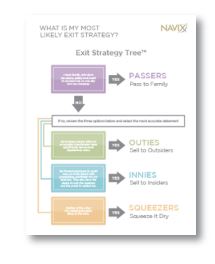
Events
The Upside of Stress Book Review
The Upside of Stress
By: Kelly McGonigal
Periodically, I share a favorite book review from Readitfor.me.
There is never enough time to read all the latest books – this tool is a great way to learn and to stay on top of the latest topics and new ideas.
The Readitfor.me tool has grown into a great resource for both personal and team growth, offering book summaries, micro courses and master classes. Check out this link: Readitfor.me. See how these tools can help build you personal and Team Strength.
Here is a summary of the Book
The Upside of Stress
by Kelly McGonigal
Book Review by Readitfor.me

As it turns out, whether or not stress is harmful has a lot to do with how you view it.
Read on to learn how to change your mindset about stress.
Stress is bad for you, right?
As Kelly McGonigal tells us in this fascinating book, the research that scientists have done on stress tell a slightly different story.
As it turns out, whether or not stress is harmful has a lot to do with how you view it.
Consider the following research findings comparing people who view stress as harmful to people who view stress an enhancing.
People who believe stress is enhancing are less depressed and more satisfied with their lives than people who view stress as harmful. They have more energy and less health issues. They are more productive at work and are happier doing it. They also have a greater confidence in their ability to cope with challenges, and even find meaning in difficult circumstances.
That’s a pretty long list of benefits just for changing your mind about what stress means to you.
Join us for the next 12 minutes as we explore what stress actually is, and how you can completely change your relationship with it.
You might even learn how to harness the stress in your life to create a more meaningful, fulfilling life.
Let’s get started.
What is stress?
We first need to start with an understanding of what stress actually is. When you are feeling stress, your body releases cortisol and adrenaline.
From an evolutionary perspective, this stress response is designed to help you. But – like stress in general – it is more feared than appreciated. We’ve come to associate stress as toxic a state which we should try to minimize as much as possible.
But, as we’ll describe as we work our way through this book, your stress response is a resource to rely on rather than an enemy to eliminate.
How stress got a bad name
We won’t spend much time on this section. Basically, a scientist by the name of Hans Selye did a lot of stress research in the 1930s and 40s that showed that stress caused negative physical reactions.
He became known as the Grandfather of Stress, and was nominated for the Nobel Prize ten times, and devoted his life to spreading the word about his research, leading us all to believe that stress is toxic.
The problem is that all of his research was performed on rats, and in situations that bear little resemblance to everyday human stress.
This is what a typical day looked like for one of Selye’s lab rats. You’d start off with unpredictable, uncontrollable shocks. Then you’d get thrown in a bucket of water and forced to swim until you started to drown. Then, finally, you’d get put into an overcrowded cage with other rats where you would fight over an inadequate supply of food.
That, McGonigal rightly points out, isn’t stress – that’s the Hunger Games for rodents.
Nonetheless, Selye made the leap from rats to humans, and from torture to every day stress, and voila – we all developed a negative view about stress.
So now you have a negative mindset about stress
In recent surveys, the American Psychological Association has found that most people in America perceive their personal levels of stress as unhealthy.
These people believe that experiencing stress:
- depletes their health and vitality
- debilitates their performance and productivity
- inhibits their learning and growth
- is negative and should be avoided.
People who have this mindset about stress are much more likely to say that they cope with stress by trying to avoid it. They are more likely to:
- Try to distract themselves from the cause of the stress instead of dealing with it.
- Focus on getting rid of their feelings of stress instead of taking steps to address its source.
- Turn to alcohol or other substances or addiction to escape the stress.
- Withdraw their energy and attention from whatever relationship, role or goal is causing the stress.
Obviously, this reinforces the belief that stress is bad and should be avoided at all costs.
But as we turn our attention towards the benefits of embracing stress, we’ll find a much different story emerges.
Changing from a negative mindset to a positive one
As it turns out, you have a choice about how you respond to stress. Victor Frankl described this as the space between stimulus and response.
A minority of people in the general population believe that stress enhances their lives. These people believe that experiencing stress:
- enhances their performance and productivity
- improves their health and vitality
- facilitates their learning and growth
- is positive and should be utilized.
Where people with a negative mindset towards stress try to cope with stress, people with a positive mindset towards stress try to use it to their advantage. They are much more likely to:
- Accept the fact that the stressful event has occurred and is real.
- Plan a strategy for dealing with the source of stress.
- Seek information, help, or advice.
- Take steps to overcome, remove, or change the source of stress.
- Try to make the best of the situation by viewing it in a more positive way or by using it as an opportunity to grow.
So, just by creating a positive mindset about stress, you can turn self-doubt into confidence, fear into courage, and isolation into connection.
All without getting rid of the stress.
Which begs the question, how do you change your mind about stress?
The insight from the research is that you get what you expect. If you expect stress to be a negative experience, that’s exactly what you will get. If you expect it to be a positive experience, that’s exactly what you’ll get.
There is evidence for this in a lot of different areas of your life. For instance, how you think about getting older has some serious consequences for you later in life. People who have a positive view of aging add an average of 8 years to their life, and have an 80% lower risk of a heart attack.
Your mindset not only helps you in the moment, but also influences you to make better decisions in the future, leading to better outcomes. It’s as though mindset matters twice.
Now let’s turn our attention to the three different ways that your new positive mindset about stress will help you lead a more productive and fulfilling life.
Stress helps you engage
In this section we’ll focus on how you can transform a threat into a challenge.
Our common reaction to stress is to avoid it, and the most common advice you get when do deal with stress in the moment is to “calm down.” Basically, you should find a way to get rid of the stress.
However, viewing the stress response as a resource can transform the physiology of fear into the biology of courage. The stress response does a number of things that will help you perform well under pressure.
It focuses your attention, heightens your senses, increases your motivation, and mobilizes energy. This is true even when the stress doesn’t feel helpful, which is the case when people experience anxiety.
When you start to feel your heart pounding or your breath quickening, remember that this is your body’s way of trying to give you more energy. When you start to feel tension in your body, remember that the stress response gives you access to your strength. Are your palms sweaty? Good, that means you are close to something that you want. Do you have butterflies in your stomach? Embrace them – it’s your guts way of saying that this is something that matters.
If you take the traditional advice and try to calm down, you are preventing yourself from accessing the energy, strength and drive that the stress gives you. So, instead of trying to take a deep breathe to try and calm down, take a deep breath and sense the energy that’s available to you.
Then, use it. Ask yourself what action you can take that is consistent with your goal in this moment.
Connect: How tending and befriending transforms stress
In this section we’ll focus on how you can activate your “tend-and-befriend” response to better deal with stress.
From an evolutionary perspective, we have this “tend-and-befriend” response to make sure we protect our offspring. Rather than get paralyzed with fear (and let our offspring get eaten by that lion), we spring into action.
It does so because it increases activity in three systems in your brain.
First, it activates the social caregiving system, which is regulated by oxytocin. When this happens you feel more empathy, connection and trust.
Second, it activates the reward system, which releases the neurotransmitter dopamine. When this happens you feel more optimistic about your ability to do something meaningful, and it primes your brain for physical action, ensuring that you don’t freeze under pressure.
And third, it activates the attunement system, which releases to neurotransmitter serotonin. When this happens, your perception, intuition and self-control are all enhanced to ensure that the actions you take have the biggest positive impact.
In other words, as McGonigal points out, the tend-and-befriend response makes you social, brave and smart. Which is a much better response than trying to avoid dealing with whatever is causing you stress.
So, when you are feeling overwhelmed, look for opportunities to do something for somebody else that goes beyond your regular responsibilities.
Fair warning – your brain is going to tell you that you don’t have the time or energy to do it. But that’s exactly why you should. The good news is that small gestures work just as well as grand gestures to activate this response, so just get into action rather than waiting for the perfect moment to do something big.
Grow: how adversity makes you stronger
In this last section we’ll focus on how stress can actually help you learn and grow.
As McGonigal points out, the idea that we grow through adversity is not new. It’s embodied in the teachings of every major religion.
The science shows that plenty good can come from stressful or traumatic experiences. Here is a partial list of some of the positive changes that are commonly reported in cases of hardship, loss or trauma:
- A sense of personal strength;
- Increased appreciation for life;
- Spiritual growth;
- Enhanced social connections and relationships with others;
- Identifying new possibilities and life directions.
The important part, McGonigal explains, is that the good that comes from difficult experiences isn’t from the event itself – it comes from you.
What it requires is for you to look back on the difficult experiences from your past, and to reflect on the positive changes that came from them. Then, when you are faced with future stressful situations, you’ll be able to recall how you were able to overcome them in the past to help you overcome them in the moment.
This creates a growth-mindset towards adversity.
Conclusion
Ultimately, if you are trying to do big things in your life (the fact that you are reading this would suggest that’s the case), you are going to face adversity. Lots of it.
How you choose to deal with it is up to you. One path leads to growth and the fulfillment of your goals, and the other leads you despair and inaction.
And when you look at it that way, there really is only one choice.
If you are like my clients, you work hard learning how to grow your company or organization. You invest the time and money to improve your team for better results and increased value. The Readitfor.me tool has grown into a great resource for both personal and team growth, offering book summaries, micro courses and master classes. Check out this link for details Readitfor.me and see how this tool can you build your company for long term success.
Call 772-210-4499 or email to set up a time to talk about tools and strategies to lead to better results.
Please share this with a friend/colleague
The Simple Little Org Chart Can Produce Big Value at Your Exit
Few business tools are as overlooked and underappreciated as the organizational (“org”) chart. Likely, you have diagramed one for your company.
We tend to pull them out at specific moments such as when we need to meet with a third party like a vendor, customer, lender, or new hire. If out of date, which they often are, we quickly update them. Then, after the meeting, the chart gets put away, forgotten until the need arises to pull it out again.
Most business owners stop there, having no further use for this unexciting little instrument. But hidden within the org chart is the potential to drive significant value in your company between now and exit. Here’s how.

The Future Org Chart Exercise
Convene your leadership team for an exercise called “The Future Org Chart.” Pick a future period of time such as three to five years out, and lead the team through the process of diagramming what the company org chart must look like on that date in order to support the expected growth between now and then.
Choose a date that matches up with the growth plans and timetable defined in your company’s long-term strategic growth plan. (If your company lacks a written growth plan, watch this webinar to learn why this is an expensive mistake.)
Start with a completely blank sheet, and then discuss and fill in the organizational structure needed to realize and support this growth. Assign job titles (those are the boxes) and define reporting roles and relationships (those are the connecting lines), but do not assign current employees to the future org chart — not yet.
You and your team will be tempted to start filling peoples’ names in the boxes, but it is important that you do not do this until you have a completed org chart that the entire team agrees with and supports. At this point, you now have a clear and written vision for the team that is required to grow and lead your company over the next three to five years.
Meeting With Your Leaders
There’s more to be gained. With the Future Org Chart template built, it is time to put names in the boxes. We recommend you meet individually and confidentially with your leaders to get their input because some of these conversations involve people’s careers:
- Some of your employees may have ambitions about climbing the organizational ladder and progressing into one of the higher positions forecasted in the Future Org Chart.
- Some employees may aspire to occupy a position currently occupied by another person.
- The Future Org Chart may call for adding new management layers into the company, and some employees may worry about being eclipsed or losing status if the level they currently occupy is subsidiary to a new level above it.
Issues or opportunities uncovered by these one-on-one conversations have the potential to be good for both the team and the company. Leaders aspiring to do more and earn promotions can be trained and coached on what is necessary to achieve their goals, and any fears about growth can be addressed. By necessitating these conversations, the Future Org Chart helps you develop and grow your current team.
Assigning Names
After receiving input from your team members, now it’s time to finally put current employees’ names in the appropriate boxes within the Future Org Chart. Once done, you may see the following:
- Some newly created positions have empty boxes. This indicates that to create the team of the future, your company will need to identify and hire a person qualified to fill that need.
- Some existing positions that are currently occupied become empty between now and the Future Org Chart’s effective date. This reveals some succession planning that must take place, typically because the employee currently occupying that position is retiring sometime within the next few years.
- Some names are listed in multiple boxes. This indicates that you have some people doing too many things. You may need to find ways to add new talent into the picture to reduce the organizational dependency on any one person who is over-allocated. The most important person to be wary of here is yourself — as the business’s owner, you cannot remain directly involved in too many functions. If the company is overly dependent on you it will be difficult if not impossible to achieve a successful exit.
- Some names do not belong in any box. This might happen for a couple of reasons. Perhaps the employee is not in alignment with the rest of the organization, and this exercise is shining a light on that challenging reality. Alternatively, perhaps the direction and pace of the company’s growth will eventually eliminate the need for a person’s role and skills. In either situation, it is best to recognize these inconsistencies and develop a response rather than miss or overlook the issue.
With this exercise complete, you now have a written picture of what the company’s team needs to look like in the future, as well as specific insights on what work needs to be done to make that future happen. The Future Org Chart exercise provides you with a road map for the company’s coaching, training, hiring, succession, and team development needs in order to realize the desired growth over the next several years. From there, you and your team can develop the plans and incremental steps required to migrate from the current organization to this organization of the future.
Maximizing Company Value
Having a solid plan for growth and the right team to achieve that plan would be reason enough to complete a Future Org chart, yet there is one final benefit for you to reap from this exercise. Building a competent team for the future that can deliver on this growth drives value in your company, which in turn supports achieving your exit goals: getting maximum value for the company, building a sustainable organization, and leaving on your own terms.
All of this from the simple, little, often-overlooked org chart.
Review our checklist, 25 Business Value Drivers, to identify steps that may enhance your business value.
To discuss your unique business, and how to plan for and achieve a successful exit, Call 772-210-4499 or email Tim to schedule a confidential, complimentary consultation.
What 65,390 Swedish Startups Reveal About Finding Happiness After Exit
A recent study of 65,390 Swedish business startups conducted over nearly 20 years offers one important insight for business owners as they prepare for exit — you might not be successful in your next venture.
Puzzlingly, the entrepreneurial experience these Swedish leaders gained from starting up their companies often did not translate into positive results if they later tried their hand at another company. Here’s why that is relevant when you are thinking about your exit.

Why Many Business Owners Underperform in New Ventures
Many U.S. business owners do not wish to retire after exit. Rather than lead a life of pure recreation, many owners intend to do something meaningful and challenging after they exit. Perhaps the most common path is to start up and/or lead a new company. This makes sense, for if you successfully built and exited from one company, then your skills, talents, and experience should produce growth and success in a new company.
Yet, ironically, this is not often the case. Many business owners fail to build or lead successful companies the next time around. When this happens, it can leave these owners with a sense of regret for having exited from their prior company; they find themselves denied the sense of accomplishment and achievement they once enjoyed before their exit. The Swedish startup founders experienced similar results.
Undoubtedly, a number of factors contribute to why business owners underperform in new ventures after an exit. Sometimes owners do not fully diagnose the specific alignment of market conditions that created the opportunities behind their company’s success. Also, with time we tend to forget or downplay the make-or-break moments and gut decisions that determined the difference between victory and defeat. Success is fragile.
Finally, many owners underestimate and underappreciate the effort, risk, and chance involved in creating their prior company’s results. If the new venture pursued after exit is not a quick success — and most situations are not — it’s easy to get disillusioned, frustrated, and distracted. As Microsoft founder Bill Gates once said, “Success is a lousy teacher. It seduces smart people into thinking they can’t lose.”
A Safer and Surer Way to Exit Happiness
As you think about and prepare for exit, the question of what you are going to do in life after exit may begin to loom large on the horizon. Too many owners unconsciously assume that prior business success practically guarantees future success. The majority of the time it does not, as confirmed by the Swedish research study.
Rather than make this assumption, there is a safer and surer way to exit happiness. Owners should begin investigating their plans for life after exit before actually exiting. Take two- to four-week “externships” to work on and test drive these new opportunities before you exit from your current company. That way, you will eliminate dead-end ideas, clarify your goals, and pave the way for a smoother transition into your new business venture.
For more information about preparing for life after exit, download our free ebook, “Your Last Five Years: How the Final 60 Months Will Make or Break Your Exit Success.”
To discuss your unique business, and how to plan for and achieve a successful exit, Call 772-210-4499 or email Tim to schedule a confidential, complimentary consultation.
New Survey What It Feels Like to be a CEO Offers Exit Planning Insights
A newly released survey explores the human side of being a company’s chief leader and offers insights for CEOs and business owners on the challenges involved in getting themselves and their companies ready for exit or success.

The survey, The CEO: A Personal Reflection, was prepared by global leadership consulting firm Egon Zehnder. Over four hundred CEOs from a cross section of industries and countries participated. Topics addressed included what the job entails, the level of preparation CEOs felt they had received before taking the role, their succession planning process, and how CEOs lead and cope in these volatile times.
While the study addresses a wide range of themes and issues, it reveals some important insights that CEOs and business owners should take heed of as they move towards a future exit. For example, the study revealed that one in three CEOs (32%) indicated succession planning was underway with a clear process being followed. Almost half (44%) of the CEOs responded that either no succession planning had been initiated but needed to be, or some planning was underway but without a clear process or outcome.
The research study’s examination of CEO expectations versus reality should serve as an alarm bell. This section asked CEO participants which of their roles had turned out to be easier or more difficult than expected. Listed below are the top five roles that CEOs found more difficult than expected, along with the percentage of survey respondents who indicated so:
Driving cultural change – 50%
Finding time for myself and for reflection – 48%
Developing my senior leadership team – 47%
Balancing the short-term financial focus with the longer-term transformation of my company – 40%
Managing the impact on my family / personal life – 35%
As you review this bullet point list, consider what it takes to plan for and achieve successful exits: driving cultural change, personal time and reflection, building the team, transforming the company, and addressing the impact on one’s personal life. In other words, every one of the top five roles that CEOs found more difficult than expected are essential steps within the process of preparing for exit and reaching one’s exit goals.
It’s also important to note that about 80% of the CEOs participating in this survey lead organizations with revenue of $1 billion or greater. Most privately held companies are significantly smaller, and thus have flatter organizations with fewer leaders and arguably more demands on the CEO. Thus, if about one-half of these CEOs from very large companies found these roles to be harder than expected, C-level leaders and owners in small to mid-sized companies could reasonably expect to have even greater difficulties.
This survey’s findings point to the key theme in how to be successful at exit—start preparing as soon as possible. Now is best. Many owners and CEOs wait too late to get started and deny themselves sufficient time. If you desire to exit in five years or less, you are already in the final stretch and there’s likely a lot to get done.
Visit the Egon Zehnder website to learn more about this study and download a copy of the full report. Also, download our free ebook “Your Last Five Years: How the Final 60 Months will Make or Break Your Exit Success” to get started with your exit planning.
To discuss your unique business, and how to plan for and achieve a successful exit, Call 772-210-4499 or email Tim to schedule a confidential, complimentary consultation.
Unhappy with Your Business Partner? Here’s Why.
Note: This material is adapted from A Tale of Two Owners: Achieving Exit Success Between Business Partners, by Patrick Ungashick, CEO of NAVIX.
By Charles Willi, Sep 20, 2018 11:15:00 AM
Leadership speaker and guru Brian Tracy has been quoted as saying, “If you like a person, you say, ‘Let’s go into business together.’ Man is a social animal after all, but such partnerships are fraught with danger.” He’s right. Countless men and women have said “let’s go into business together,” become partners, and built successful companies. Often, these partnership relationships launch with enthusiasm and excitement, aligned around a common vision of company growth and success. Yet many business partners wake up one day to realize they are unhappy in this relationship “fraught with danger.” The change can happen shortly into the relationship or curiously can occur years or decades into a harmonious relationship. When you are unhappy with your partner, the potential dangers include slowed company growth, a tension-filled office environment, a divided company culture, and lowered profits. If left unchecked, unhappy partnerships can lead to unhappy or failed business exits. So why do some partners become unhappy with each other?

Many business observers have commented that being in a business partnership is akin to being in a marriage. This is partially accurate. Like a marriage, for a business partnership to be healthy and last it must be rooted in shared values, effective communication, and mutual respect. However, company partners have different goals for their business relationship than those that exist within a marriage. Also, the tools used to sustain a healthy marriage are different than the tools used in a healthy business partnership. When the proper tools are not applied, the danger of an unhappy partnership rises. In our experience, owners fail to use many of these tools, typically because they either don’t know they exist or don’t know the role these tools play in maintaining partnership alignment and harmony.
The six most common tools that get overlooked or under-utilized in partnership relationships are:
1. Written Job Descriptions
Partners working in the business often exempt themselves from this common employee management tool under the premise that the document is unnecessary because they are owners first and employees second. However, it is difficult for partners to achieve and maintain alignment if their roles and responsibilities within the company are unwritten and thus left up to individual interpretation and application.
When partners do not have current written job descriptions, a common byproduct is the blurring of decision-making authority and accountability. This, in turn, reduces efficiency and increases partner tension. It is easy to envision the problems created if every company decision and issue were subject to a vote of the partners. Not all partners can be—nor should be—involved in all decisions. Some issues are ownership-level matters that require discussion and input from the partners. Other issues are management-level matters dealing with day-to-day operational and tactical areas. Yet without written job descriptions, which partner has input and authority to make which decisions and in which circumstances remains unspecified. This ambiguity invites partners to interpret the answers for themselves—not a method that leads to alignment.
Partners can rely on precedent and ad hoc efforts to fumble their way through this ambiguity for a surprisingly long time, as long as their goals are in alignment. But, when exit draws near for one or more partners and their goals change, partners are left to reinterpret their responsibilities and reevaluate their priorities as they see fit. At that point, the lack of written job descriptions can cause significant partner difficulties and inhibit creating exit-goal alignment.
2. Job Performance Benchmarks and Evaluations
Like with written job descriptions, partners working in the business often exempt themselves from defined job performance benchmarks and periodic evaluations against those benchmarks under the premise that the exercises are unnecessary given that they are business owners. In situations where the partners are equal partners, they may also find it difficult to evaluate one another’s job performance and hold one another accountable for performance, given that they see themselves as peers rather than subordinate to one another. Each partner is left to individually interpret not only his or her responsibilities and performance, but also each other’s. This fuels misunderstanding and a lack of accountability.
3. Compensation Tied to Market Rates
Partners with identical ownership percentages (i.e., two partners with fifty-fifty ownership) often take identical compensation, rather than using the tool of tying compensation to market rates. Equal partners usually aspire to treat themselves equally, and therefore they agree early in their relationship to allocate everything equally, including compensation. In the beginning, this seems advantageous. While the business is small and cannot yet afford to pay market-rate wages to the partners, taking equal below-market compensation evenly spreads the risks and burden. Once revenues and profits increase, the partners usually enact identical wage increases, even though the partners’ positions within the company evolve.
If this continues unabated, the partners end up with wages grossly inconsistent with market rates for the position each occupies. Even the most good-natured and selfless underpaid partners may come to resent the imbalance. Grossly overpaid partners often come to resent even discussing the matter; in fairness, they are adhering to an arrangement that all the partners willingly entered into years earlier. Few issues can leak into a relationship and erode happiness like the issue of frustrations with take-home-pay.
While it would be easy to conclude that the solution is for the partners to simply adjust compensation to be consistent with market rates for their positions, this is easier said than done. Once this genie is out of the bottle, it is difficult to get it back inside.
The proper place for business partners with equal ownership to treat themselves equally is with profit distributions. Profits are surplus earnings to either be reinvested or distributed for the benefit of the business’s owners. When distributed, profits are usually shared in direct proportion to ownership (unless their ownership structure or a prior agreement dictates otherwise). Wages, on the other hand, are different. Wages are payments to people for services rendered to the business. Wages should be consistent with market rates for similar positions and for persons with similar skills and experiences.
4. A Written Strategic Plan for the Company
Many businesses manage to achieve significant revenue and profit growth without formal long-term strategic plans. Therefore, to some owners, strategic planning and plans seem unnecessary, a misuse of time, and potentially counterproductive if the process creates rigidity in the company. However, this tool helps preserve partner happiness. An effective long-term strategic planning process requires partners (and their leadership team) to debate and determine a unified course of action for the business. Their decisions are summarized in a written document—the strategic plan—to share within the organization to increase buy-ins and enhance accountability. Without an effective planning process, partners often find themselves pursuing individual initiatives and ideas, pulling the organization in different directions and undermining or outright sabotaging alignment. It’s fairly easy to become unhappy with somebody who is continuously rowing your boat in a different direction than the one you want to follow.
5. Financial Budgets
Just like many companies can grow without preparing business plans, many companies can grow and many partnerships can be happy for an extended period without preparing annual budgets. However, a well-thought-out and actively reviewed budget is an important tool to maintain good partner relations. Just as with a strategic planning process, the budgeting process requires partners to debate and determine how they will annually allocate and prioritize financial resources. The finished product—the written budget—serves as the financial song sheet for the partners (and their leadership team) to sing from. In organizations lacking a healthy budgeting process, partners likely find themselves engaged in an ongoing tug-of-war over the next surplus dollar and discretionary expense.
6. Regular Partner-Only Meetings
Partners of small- to medium-sized businesses are notoriously inconsistent about conducting regular meetings for just the company’s partners. Many partners are comfortable dispensing with the formalities of regularly held meetings, especially if all of the partners are actively involved in the business. When partners work inside the company, they may see little need for dedicated meetings for the partners separate and apart from the business’s leadership team, because they likely know most of what is happening within the company and are busy dealing with pressing issues and priorities.
Making matters worse, since the 1990s and 2000s, the limited liability company (LLC) has become the most prevalent legal form for businesses within the United States. Before then, the most common legal business form was corporations: regular C and subchapter S corporations. Corporations must have clearly designated boards of directors and officers and must hold regular owner (i.e., “shareholder”) meetings at least once per year. In contrast, LLCs usually are not legally required to name boards of directors and officers, nor are they required to hold meetings among owners (i.e., “members”). Thus, business partners today have even lower sensitivity to the need to hold regular partner meetings than was true in the past.
Without a regular, predictable, and safe forum to discuss partner-level issues, too often partners fall into the destructive pattern of leadership by committee. This blurs relationships, erodes accountability, and undermines trust. Regular partner-only meetings are the proper place to address partner-level issues. For example, “Should we sell the company?” is a partner-level question. In contrast, “Do we upgrade our photocopy machines?” is probably a management-level decision that not every partner needs to be involved in. It is difficult to maintain trust and good relations among partners if they lack regular, predictable opportunities for ownership-level conversations.
Conclusion
There are other ways in which business partners may grow unhappy with one another. Sometimes values fall out of alignment. Personal circumstances may change, spilling over into business relationships. However, the six tools discussed here are familiar and commonly recognized business tactics that too many partnerships overlook or skip past, wrongly concluding that these best-practices are unnecessary. Without these tools, the partnership relationship is weakly supported. Over time, cracks develop and compound, until finally one day you wake up unhappy and wondering what happened to the good times.
Download: “The Five Major Exit Goals Most Co-Owners Disagree About” eBook
To discuss your unique business, and how to plan for and achieve a successful exit, Call 772-210-4499 or email Tim to schedule a confidential, complimentary consultation.
Five habits and misconceptions that commonly hinder owners from achieving successful exits

Dear Business Owner,
You might not like this letter. Reading it could help make you a large amount of money, save irreplaceable time, and avoid an inestimable amount of stress. But you still might not enjoy reading this because it contains some facts you may find hard to hear.
Our company does exit planning – we help business owners define their exit goals and then design and implement plans that achieve those goals. In our work, it’s common that one of the major obstacles to the owner achieving exit success is the owner him- or herself. Yes, often fr comprise a large part of the problem. We usually don’t say this so bluntly because getting fired for tactless speech helps neither the client nor us. But the common reality is you – or more specifically, your habits and misconceptions – are a significant barrier to exit happiness.
Before explaining how and why you may be making your own exit harder, please know that by pointing out these issues, we are not criticizing your effectiveness as a leader nor overlooking your company’s accomplishments. You’ve built a fine company, otherwise you would not be reading this. However, building a business is a different process than exiting from a business. And just because you have built a strong company does not mean you will have a happy exit. If the reverse were true, every successful owner would have a successful exit; clearly, this is not the case. The root issue is that many owners unknowingly do certain things (or don’t do certain things) that undermine or even block their own exit success.
So what habits and misconceptions commonly hinder owners from achieving successful exits? Review the list below to spot the ways you may be hindering your own exit.
1. Remaining involved in day-to-day operations – If your company depends on your skills, knowledge, and/or experience to get the daily job done, that dependence will become a serious problem when you try to exit. Your company must be able to run smoothly without you most of the time, otherwise it will likely be worth less to a buyer and/or may not survive your exit. Undoubtedly you are good at what you do, and perhaps in the past you had to be inextricably involved in daily operations to ensure the company’s survival. But that’s in the past. To exit successfully, you must create and lead a team that can handle most operational issues without your supervision.
2. Remaining involved in business development – If your company cannot find and acquire new customers without your help, that, too, will present a problem when you attempt to exit. Your company’s sales power cannot walk out the door when you do, otherwise the company’s value to a buyer decreases and/or the company might not survive past your exit. Just like with operations, if you are currently involved in sales, it’s probably because you are good at it and perhaps even like it. But prospects and customers must have a whole team with whom they can do business, not just you. Extracting yourself from business development, all the way from lead generation to closing the sale, is imperative to exit success.
3. Not talking about your future exit with your top employees – Many owners treat their future exit like a “dirty little secret” (as a client once called it) and feel pressured to hide it from their top employees. That’s understandable because your exit has the potential to be a “I-win-you-lose” situation – you exit happily while they struggle with career uncertainty. The conventional wisdom, therefore, is to withhold your exit from your team until the last possible moment. That approach limits honesty, feeds paranoia, and hinders building company value. The better method is to identify your trusted co-leaders, find the win-win, and engage them in the process. This restores honesty, builds trust within your team, and creates alignment with everybody working to achieve a successful exit.
4. Not tracking performance against financial and operational metrics – When you go to exit, your future buyer or successor will want to see that the company has performed well over time and can be expected to continue doing so. Perhaps the best way to create confidence for buyers or successors is to show positive results in writing against key leading metrics and compelling goals. Examples of ways to define and track key results include:
- Creating annual budgets and measuring performance periodically throughout the year
- Building operational or sales dashboards and keeping score every week or month
- Publishing long-term strategic growth plans and tracking performance against the strategic objectives each quarter or year
Many companies do not do this work, in part because it takes commitment and resources. Another reason some companies skip these steps is because their owners feel these efforts are unnecessary. Many owners are entrepreneurial at heart, and while they enjoy the creative challenges of leading a company, they do not enjoy the regular responsibilities that come with managing a company. Examples of tasks more managerial in nature include defining company goals, identifying leading indicators, diligently tracking results, and holding individuals and teams accountable. Consequently, if the owner(s) do not focus on this work, often the rest of the organization overlooks it as well. Carry this oversight to your exit, and you may find it hard to get maximum value and achieve a stable exit if the company’s ability to perform well is unproven or unclear.
5. Waiting too late to start your exit planning – Too many owners put off preparing for exit, often waiting until perhaps a year or two prior to when you would like to exit. That’s too late. Many of the accounting, tax, legal, and business exit tactics that can enhance success take years to implement and reach their full effectiveness. Plus, preparing for exit takes a considerable amount of time. If you cram all of the required work into the final 12 to 24 months prior to exit, you risk taking your eye off the company’s performance exactly when you can least afford it.
It’s common sense that the less time you have to prepare for exit, the lesser your results may be. Once you reach the point where you intend to exit in the next five years, serious exit planning and preparations must commence as soon as possible. To better understand the time and effort typically required to prepare for exit, download our free ebook, “Your Last Five Years: How the Final 60 Months will Make or Break Your Exit Success.”
Congratulations on completing this open letter with an open mind. We wrote it out of a genuine desire to help you achieve a successful exit. Realizing you may be part of the problem clears the way to implementing a winning exit plan.
Sincerely,
Your Exit Planning Team at NAVIX
To discuss your unique business, and how to plan for and achieve a successful exit, Call 772-210-4499 or email Tim to schedule a confidential, complimentary consultation.
Planning on Passing Your Business to the Kids? Consider Selling a Piece of It First
If your exit strategy is to pass your business down to the next generation of family members, selling a piece of the company to an outside buyer may surprisingly make a lot of sense as part of your overall exit plan. Normally, keeping the business in the family means just that—preserving family ownership, not selling to an outsider. But selling a minority interest (less than 50%) of the company to an outside investor can help overcome some of the more difficult challenges that family business owners face in their exit and succession planning. Here’s how.
Selling a non-controlling interest in the company to an outside investor, often a private equity group (PEG) or a family office, can solve four problems that commonly arise when trying to achieve a smooth exit for outgoing family owners and prepare the next generation of family owners to lead the company effectively. These four problems include:
-
1. Liquidity for the Outgoing Owners
One of the most challenging issues to resolve is how to provide financial income and economic freedom for the outgoing owners, whom we will call Dad and Mom. Commonly, Dad and Mom have invested heavily in the company over the years, and consequently, a significant portion of their net worth is tied up in the company and its supporting assets, leaving Dad and Mom unable to retire or step down from the company without somehow obtaining cash from the business. Yet the company typically does not have a large amount of surplus cash sitting around to fund Dad and Mom’s exit. As they lack the cash, the most common solution is keeping Mom and Dad on the payroll well after the next generation has taken over the company. This rarely works for very long. At some point, Dad and Mom may come to resent and/or worry about being continuously dependent on the company. Or, the next generation, whom we will call the Kids, may grow tired of the payroll burden if they do not see any light at the end of the tunnel. Keeping Dad and Mom permanently on the payroll is not a winning solution.
Selling a minority interest of the company to an outside investor presents a more viable solution on how to create financial independence for Dad and Mom. The outside investor’s cash infusion can fund some or all of the outgoing parents’ financial needs, freeing Dad and Mom from staying on the payroll indefinitely and giving them power over their own assets. Meanwhile, the Kids maintain a controlling interest in the company. At a future date, they may pursue buying out the minority investor if they desire to restore 100% family ownership of the company.
2. Eliminating Personal Guarantees
A second significant financial obstacle common within family-owned companies deals with personal guarantees on the company’s commercial or trade debt. Often, Dad and Mom have covered the guarantees up to that point, but the Kids lack the collateral and leadership track record to assume that responsibility when Dad and Mom exit. This scenario puts Dad and Mom in the uncomfortable situation of turning over operational control of the company to the Kids while having to stay on the hook for the financial risk. Few parents will be enthusiastic about that prospect. The Kids have reason to be unhappy too, as they will likely wish to avoid burdening their parents. Also, as long as Dad and Mom provide the personal guarantees, they will have the power to exert influence or control over the company, which is typically a sensitive subject for the Kids. If the issue of personal guarantees remains unaddressed, it can prevent the entire family from achieving a successful exit.
Selling a minority portion of the company to an outside investor, such as a PEG or family office, can eliminate the personal guarantee barrier to exit success. The entrance of an outside investor can give lenders sufficient confidence and collateral to remove their requirement for any personal guarantees. Furthermore, PEGs and family offices can often secure for the company more favorable debt terms and rates due to their experience and long-standing relationships with their preferred lenders.
3. Insufficient Professional Management
One other major challenge within many family businesses is how to inject professional management expertise into the company without surrendering the family’s leadership of the company. This need becomes acute as the company grows and transitions from one ownership generation to the next. You have likely witnessed family-led companies that struggled or perhaps even collapsed because the successor generation lacked sufficient leadership talent and experience to run the company.
Bringing in an outside investor can upgrade the company’s professional management without displacing the family’s controlling interest. First, outside investors will usually occupy several seats on the company’s board of directors. The right investor will fill these seats with quality leaders who enhance the company’s strategic leadership, experience, and industry contacts. Additionally, as part of its investment, the outside investor may provide funds to hire new managers and employees to work for the family owner. Commonly needed positions include an experienced chief financial officer (CFO) and professional sales manager/leader. A significant upgrade in talent and experience at the board and management team level is achieved without undermining the family’s operational control of the company.
4. Objective Advice and Counsel
Within family-owned companies, personal relationships and dynamics can encroach into business matters, blurring communications, responsibilities, and accountabilities. These relationships can harm company growth and prevent Dad, Mom, and the Kids from achieving a smooth exit and succession. Even within well-functioning family relationships, when facing serious business issues, it is difficult to maintain objectivity when there are only family members in the room.
Here, too, an outside investor can add value to the family business as it moves through a succession process. The investor, again through its minority representation on the board, adds the missing third-party objectivity, perspective, and controls. For example, the investor will likely require the company to prepare annual business plans and budgets and periodically review them at the board level. Also, executive compensation—always a touchy subject in a family-owned company—will be set according to market rates and evaluated objectively according to human resources best practices. These types of steps reduce the risk of nepotism and address the concern that family politics will detrimentally influence major business decisions.
Conclusion
For the benefits of succession to materialize, family-owned businesses must work with the “right” investor – one whose values, business model, and expectations align with those of the family. As such, finding the right investor will take time and careful preparation. Ironically, the best way to keep the business in the family may be to sell a piece of the business to somebody outside of the family.
To discuss your unique business, and how to plan for and achieve a successful exit, Call 772-210-4499 or email Tim to schedule a confidential, complimentary consultation.
Nine Ways Buyers Have You at a Disadvantage When You Sell Your Company
If you intend to exit from your company one day by selling to an outside buyer, at some point in the process, you may well find yourself feeling like the diminutive David facing the monstrous Goliath. And for good reason. Buyers possess fundamental advantages over most sellers due to their diverse experiences and resources. These advantages enable buyers to potentially dominate the process of acquiring your company and put you at risk of receiving a lower price and less favorable terms than might otherwise be available. When you go to exit, if you are unaware and unprepared to counter buyers’ advantages, your exit may be less profitable and more stressful.
Here are nine specific ways buyers often have the upper hand and how to combat them.
- Money/Cash – In most situations, the potential buyers have it and you do not. There’s an old saying that rings especially true here: “In any negotiation between two parties where one has all the money and the second has none, the party with the money wins.”
- Emotional Investment – Buyers interested in acquiring your company are likely to have low to no emotional investment in the deal, whereas it’s common for business owners to describe the companies as “their baby” or “their third child”. A deep emotional investment in the business is an asset and a source of pride while growing and leading the company, but it can make you vulnerable during the negotiation process.
- Deal Importance – Many buyers are serial purchasers—if acquiring your company falls through, they simply move onto the next transaction without suffering any losses. For most owners, getting the deal done is supremely important. Without a successful transaction, you likely cannot achieve your business and personal goals.
- Internal Team Experience – Buyers usually have a team of full-time personnel with significant deal experience, often with a history of dozens of transactions. Most business owners have few to no employees with deal experience, including themselves.
- Outside Specialists – Buyers usually have a team of external advisors they regularly go to for transaction advice and services, including lawyers, accountants, investment bankers, commercial bankers, and others. These advisors often specialize exclusively in transaction work. In contrast, business owners often use their existing generalist advisors who may have limited deal experience.
- Market Knowledge –Your future acquirer will most likely have deep knowledge about relevant M&A activity in your industry at the time you plan on selling your company. Through formal research and first-hand experience, they will likely know key M&A trends, multiples, players, and opportunities. Sellers often lack this information and risk over-relying on anecdotes and assumptions.
- Experienced Negotiators – Buyers are not infallible superbeings, but most have extensive experience negotiating deals. Therefore, they may know a few tactics that help advance their interests and position. Most owners get good marks on street smarts, but in many cases, the owners’ job does not require him or her to negotiate a steady stream of deals worth many millions of dollars.
- The Process is the Job – Buyers, whether strategic buyers or financial buyers, typically have people they employ whose primary or sole job function is to work on potential acquisitions. For them, this process is their job. In contrast, for sellers like you, preparing the company for sale and then supporting the sale process is a burden you will absorb on top of running the company. For you, the process is a distraction from your everyday job and a big drain on time, money and energy.
- All in a Day’s Work – Because the process is the job for your future buyer’s people, the work, analysis, stress, and decision-making associated with potentially acquiring your company will be just a typical day’s work for them. When you finally go to sell your company, you will likely find yourself on unfamiliar ground, far outside your experience and comfort zone.
These potential buyer advantages will not occur in every given situation, and not all buyers are equally experienced and competent. However, given these obvious advantages, it becomes easy to see how buyers can outmaneuver sellers if left unchecked. As a future seller, you can take reasonable precautions to reduce or eliminate these buyers’ advantages:
- Add people to your team who have deal experience. It is not unusual for our clients, once they recognize a sale is in their future, to fill open senior management positions with people who have deal experience.
- Build a team of specialist advisors. Your accountant, lawyer, investment banker, and exit planner should all have extensive experience working with companies and transactions similar to yours.
- Meet with your advisory team well in advance of your future sale. Too many owners only convene an advisory team shortly before they want to sell. That’s a mistake. Get your team together several years before you intend to sell and meet with them at least annually. They can help prepare you for the process and experience. They also should be able to help educate you on relevant market conditions, trends, and valuation multiples.
- Distribute surplus cash from the company to build your personal liquidity prior to the sale. The more liquidity you have at home, the less stressful the sale process is likely to be.
- Delegate responsibilities off your plate to others on your team for two potential reasons. First, reducing dependency on you usually increases company value. Second, freeing up time creates additional bandwidth for you to support the exit process without getting overwhelmed.
- Take the time to educate yourself. Your advisors will help, but you can learn a lot about what to expect with just a little research. This complimentary webinar, “What to Expect When You are Expecting to Sell,” is a good starting point.
Preparing for exit well in advance and with expert help will go a long way towards evening the odds between you and your buyers. At NAVIX, our clients start the sale process prepared, with more than just a slingshot in hand. Contact us to discuss your exit goals and get answers to your exit questions.
To discuss your unique business, and how to plan for and achieve a successful exit, Call 772-210-4499 or email Tim to schedule a confidential, complimentary consultation.
The One Exit Tactic You’ve Probably Never Heard Of
Selling your company to a strategic buyer. Private equity. ESOPs. IPOs. Intentionally defective grantor trusts. There seems to be a dizzying list of different ways to exit from your company. You have likely heard of most of them, and perhaps you are considering one versus another. Yet there might be one undervalued exit tactic that you have not heard of and need to know about. It is called a “non-control recap” in short vernacular (recap is an abbreviation of recapitalization). Here’s how it works and why it may help achieve your exit goals.
What is a Non-Control Recap?
Simply put, a non-control recap is selling a minority interest (non-controlling) portion of your company to an investor (recapitalization). Historically for mature companies, non-control investors were mostly private equity groups (PEGs), but family offices are an emerging player in this market. Non-control recaps are an alternative to a full sale of the company, although a full sale can still be pursued at a later date.
Why Consider a Non-Control Recap?
This exit tactic offers business owners a number of important advantages, particularly in comparison to selling the entire company. If you are your company’s sole owner, you can gain significant liquidity by taking home cash from the partial sale while continuing as a partial owner and leader of the company. You can reduce personal risk, as you diversify your net worth by gaining cash and potentially reducing or eliminating personal guarantees with an additional equity partner involved. Non-control investors prefer a passive role in the company, leaving you in control of day to day operations and decisions. With the right investor, you gain a valuable strategic ally in growing the company. Non-control investors may bring strategic opportunities to the company that were previously not available, such as opening new markets, introductions to prospective clients, or perhaps identifying and assisting with acquisitions for growth. Non-control investors typically require minority representation on your board, bringing experienced leaders to help the company to its next level of growth. Finally, you can remain the majority owner of the company until a later date, at which point you may choose to sell the entire company at your full and final exit, gaining another round of personal liquidity.
What If You Have Partners?
If you are not the company’s sole owner but have partners, the advantages of a non-control recap include all of the above, plus flexibility to customize the investment to the needs of individual co-owners. The level of liquidity can be tailored such that each co-owner can decide to sell some to all of his or her interest. The ongoing roles can be customized for each owner as well, permitting some to leave at closing and others to continue working in the company. A non-control recap can also be the vehicle for key management to own a portion of the company going forward, as a retention and incentivization strategy and/or as a stepping stone toward a future full sale of the company to the next generation of employee-owners.
Is There a Catch?
Non-control recaps are not for every owner or every company. Investors look for companies that are profitable, offer strong growth potential, and have capable leadership. While a minority investor remains hands-off mainly in the day to day operations, non-control investors will require supermajority rights on issues like selling the entire company or raising additional capital or debt. Another point to consider: the non-control sale may receive a lower valuation multiple than what might be achieved with a full sale, reflecting the investor’s minority position. However, this potential disadvantage is offset with the opportunity to pocket some liquidity now and retain ownership for the full sale at a later date–hopefully at a higher total valuation after having grown the company to the next level.
Non-control recaps may not be the right tool for every business owner, but they offer compelling advantages that should be considered prior to deciding to sell the entire company. To learn more, review our webinar on this topic called “Cashing Out Without Walking Out” or contact us to discuss your individual situation.
To discuss your unique business, and how to plan for and achieve a successful exit,
Call 772-210-4499 or email Tim to schedule a confidential, complimentary consultation.
Do You Really Need a Successor CEO? Here’s How to Know…
Ask a room full of business owners if they need a successor CEO on their team as part of their exit planning, and usually you will hear: “Yes,” “No,” “It Depends,” and “Maybe.” Surprisingly, each of these seemingly contradictory answers can be correct, depending on the business owner’s exit goals and situation.
Hiring and grooming a future CEO requires a major effort, and CEO-caliber leaders do not grow on trees. Therefore, it’s important to know if you need a successor CEO to achieve your exit goals because getting this wrong can derail your exit success. Here’s how to tell:
First, you must know your exit strategy. We recognize that there are four distinct exit strategies:
- Pass the business to family
- Sell to an outside buyer
- Sell to an inside buyer (one or more employees)
- Planned liquidation
 Determining your likely exit strategy gets you three-fourths of the way toward answering if you need a backup CEO. If your exit strategy is the first option—passing the business to family—then you must have a capable successor in position to achieve a successful exit. Without this, the company likely does not survive your exit. The same necessity exists if you intend to sell your business to an inside buyer, which is the third exit strategy from the list above. Without quality successor CEO leadership, selling to an inside buyer also will likely fail or never happen.
Determining your likely exit strategy gets you three-fourths of the way toward answering if you need a backup CEO. If your exit strategy is the first option—passing the business to family—then you must have a capable successor in position to achieve a successful exit. Without this, the company likely does not survive your exit. The same necessity exists if you intend to sell your business to an inside buyer, which is the third exit strategy from the list above. Without quality successor CEO leadership, selling to an inside buyer also will likely fail or never happen.
If your exit strategy is the fourth option, planned liquidation, then no need for a backup CEO exists. Under this strategy, you will wind down operations upon your exit.
Of the three exit strategies reviewed so far, two of them produce a “yes” answer to the question of needing a future CEO, and one leads to a “no” answer. That leaves “it depends” and “maybe” as the remaining answers, along with one final exit strategy to consider—selling to an outside buyer. If this is your exit strategy, then “maybe” you need a backup CEO, “depending” on your situation and goals.
Before proceeding, it helps to review the two types of outside buyers: strategic and financial. Strategic buyers are other operating companies that are either competitors or in a business that is sufficiently closely related to yours, that potential synergies exist. Financial buyers are not operating companies, but rather are investment firms such as private equity groups (PEGs) or family offices seeking to purchase companies for their investment portfolio.
Here’s why this matters. If you intend to sell your company to an outside buyer, somebody has to run the business after the sale. Strategic buyers might have quality leaders on their existing leadership teams they can deploy into your company after acquiring it. Given this, it might not be necessary to have a backup successor CEO on your team to sell your company to a strategic buyer.
In contrast, financial buyers typically don’t have leadership teams available to take over running your company. Whether you need a successor CEO or not, depends on your exit goals, when selling to a financial buyer. If your goals include a desire to quickly transition out of the company to pursue other interests or retire after the sale, you will need a successor CEO on the team. Alternatively, if you intend to continue with the company for at least several years after the sale, then selling to a financial buyer will not require a backup CEO because you will remain involved.
Selling to an outside buyer is the most common exit strategy. (Our research indicates about 70% of business owners intend to exit in this manner.) If you need a backup CEO will depend on who buys your business, and your exit goals. Having said this, keep in mind that few things add value to a company like having high-quality leaders. When selling to an outside buyer, even in situations where a successor CEO is not a full necessity, you still can benefit from having high caliber leaders on your team that your buyer can employ after the sale.
Business owners need to define their exit plans and goals, years before the desired exit, because finding, hiring, and training a successor CEO usually takes several years to accomplish. (Plus, there’s no guarantee you get the right hire on the first time.) Owners who get this question wrong often find themselves unable to achieve their exit goals, including working longer than intended. At NAVIX, our clients know their exit goals and are building leadership teams capable of achieving those goals. Contact us to schedule a free consultation to review our twenty-five step ‘Exit Readiness Scorecard™’ to measure how prepared you and your company are for the future exit.
To discuss your unique business, and how to plan for and achieve a successful exit,
Call 772-210-4499 or email Tim to schedule a confidential, complimentary consultation.








 Tim is a Consultant to Business, Government and Not-for-Profits Organizations specializing in innovative and challenging ways for organizations to survive, to thrive and to build their teams.
Tim is a Consultant to Business, Government and Not-for-Profits Organizations specializing in innovative and challenging ways for organizations to survive, to thrive and to build their teams.